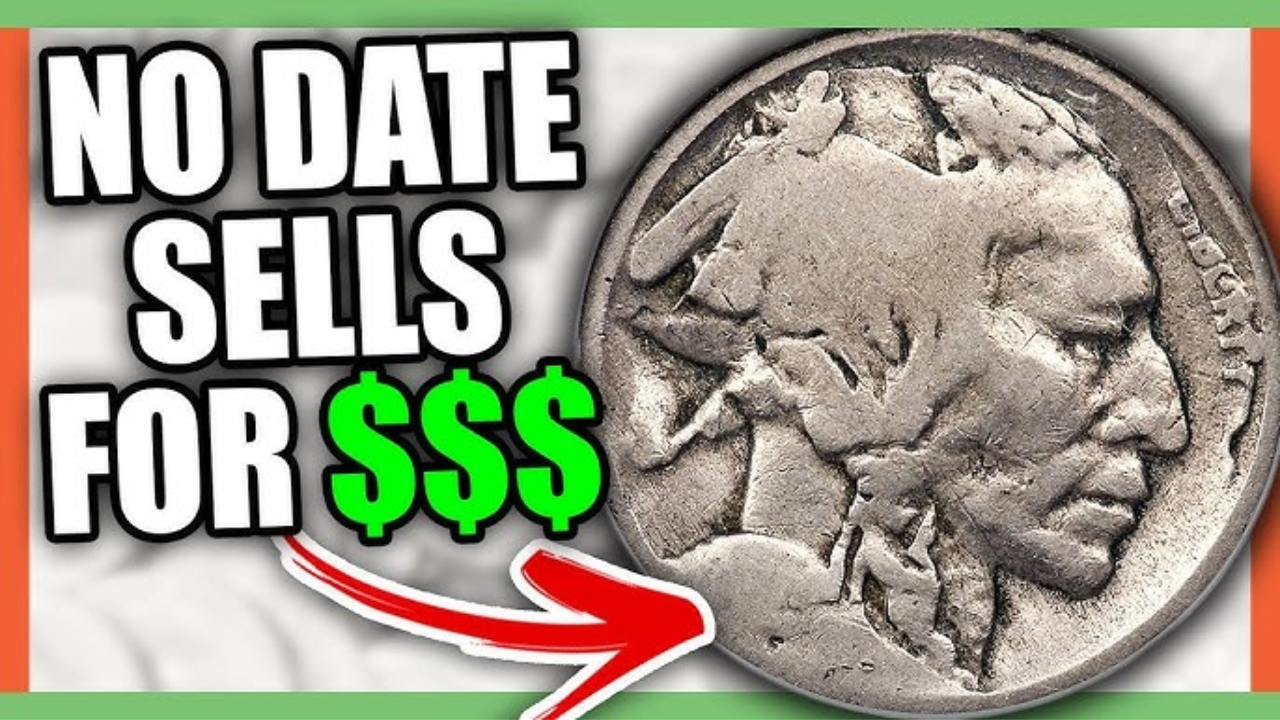Rare Buffalo Nickel Without a Date: Ever found an old nickel in your pocket change that looks worn out with no visible date? Don’t toss it—it might be a rare Buffalo Nickel worth up to $750,000! These coins, also called Indian Head Nickels, were minted from 1913 to 1938, and some without dates could hide valuable errors. In this article, we’ll explain what makes a no-date Buffalo Nickel valuable, how to spot one, and what to do if you find it, all in simple terms. Let’s uncover this hidden treasure!
What Is a Buffalo Nickel?
The Buffalo Nickel is a five-cent coin made by the U.S. Mint from 1913 to 1938. Designed by James Earle Fraser, it features a Native American on the front (obverse) and a buffalo on the back (reverse). The date, located on the Native American’s shoulder, often wore off due to heavy use, creating “no-date” coins. While most are worth just a few cents, a rare error coin, like the 1918/7-D overdate, could fetch up to $750,000 at auction.
Why Are No-Date Buffalo Nickels Special?
The high value comes from specific minting errors, like the 1918/7-D overdate, where the Denver Mint accidentally stamped an “8” over a “7” in the date. This error is rare and highly sought after by collectors, especially in good condition. Even worn no-date nickels with this error can be worth thousands, making them a collector’s jackpot.
How to Identify a Valuable No-Date Buffalo Nickel
Spotting a rare no-date Buffalo Nickel requires checking specific features. Here’s what to look for:
Key Features to Check
- Mint Mark: Look under “FIVE CENTS” on the back for a “D” (Denver) or “S” (San Francisco). No mint mark means Philadelphia. The 1918/7-D (Denver) is the most valuable.
- Overdate Error: Use a magnifying glass to check for a faint “8” over a “7” in the date area, even if it’s worn. This is the 1918/7-D error.
- Condition: Coins with less wear, clear details, and no scratches are worth more. A “Full Horn” (clear buffalo horn) is a sign of a strong strike.
- Partial Date: If you can see the last two digits (e.g., “18”), it might help identify the year.
Using Nic-A-Date (With Caution)
Some collectors use a chemical called Nic-A-Date to reveal a worn date. A drop on the date area can make it visible, but this damages the coin, lowering its value for serious collectors. Use it only if you’re curious and don’t mind the risk. Professional numismatists (coin experts) don’t trust restored dates, so avoid this for potentially valuable coins.
Here’s a table of key identification points:
| Feature | Details | Notes |
|---|---|---|
| Mint Mark | “D” for Denver, “S” for San Francisco | Under “FIVE CENTS” on reverse |
| Overdate Error | 1918/7-D (faint “8” over “7”) | Most valuable, up to $750,000 |
| Condition | Less wear, clear details, Full Horn | Higher grade means higher value |
| Partial Date | Last digits like “18” may be visible | Helps narrow down year |
| Estimated Value | $1,000–$750,000 (depending on condition) | Worn coins still valuable |
Where to Find These Coins
No-date Buffalo Nickels can still be found in everyday places. Here are the best spots to check:
- Pocket Change: Some old nickels slip into circulation.
- Coin Jars: Family savings or inherited collections might hold treasures.
- Bank Rolls: Unsearched nickel rolls from banks could contain rarities.
- Estate Sales/Flea Markets: Old coin collections often surface here.
What to Do If You Find One
If you suspect you have a rare 1918/7-D Buffalo Nickel, handle it carefully to preserve its value:
- Don’t Clean It: Cleaning damages the coin and lowers its worth.
- Store Safely: Use a protective holder or sleeve to avoid scratches.
- Get It Graded: Take it to a professional grading service like PCGS or NGC to verify authenticity and condition.
- Sell Smart: Contact reputable coin dealers or auction houses like Heritage Auctions for the best price.
Are These Coins Still Out There?
Yes, it’s possible! Many Buffalo Nickels circulated heavily, and some from 1918, including the rare 1918/7-D, may still be in coin jars, bank rolls, or even pocket change. Stories of valuable coins found in unexpected places keep collectors excited.
Here’s a table of places to search:
| Where to Look | Why It’s Promising |
|---|---|
| Pocket Change | Old coins still circulate occasionally |
| Coin Jars | Family savings may hide rare nickels |
| Bank Rolls | Unsearched rolls might include errors |
| Estate Sales | Old collections often hold valuable coins |
FAQ
Q: Why is a no-date Buffalo Nickel worth $750,000?
A: The 1918/7-D overdate error, where an “8” was stamped over a “7,” is extremely rare and valuable, especially in good condition.
Q: How do I spot the 1918/7-D error?
A: Use a magnifying glass to check for a faint “8” over a “7” in the date area and a “D” mint mark on the back.
Q: Can I use Nic-A-Date to check the date?
A: Yes, but it damages the coin and lowers its value. Avoid it for potentially rare coins.
Q: Are all no-date Buffalo Nickels valuable?
A: No, most are worth $0.20–$2 unless they have the 1918/7-D error or other rare features.
Q: Where can I sell a rare Buffalo Nickel?
A: Get it graded by PCGS or NGC, then sell through trusted dealers or auction houses like Heritage Auctions.
Conclusion
A no-date Buffalo Nickel might look like pocket change, but a rare 1918/7-D overdate could be worth up to $750,000! Check your coins for a “D” mint mark and signs of the overdate error using a magnifying glass. If you find one, don’t clean it—get it graded and sell through a trusted source. Search your coin jars, bank rolls, or family collections for this hidden gem. With a little luck, you could uncover a piece of history that’s also a life-changing fortune!



